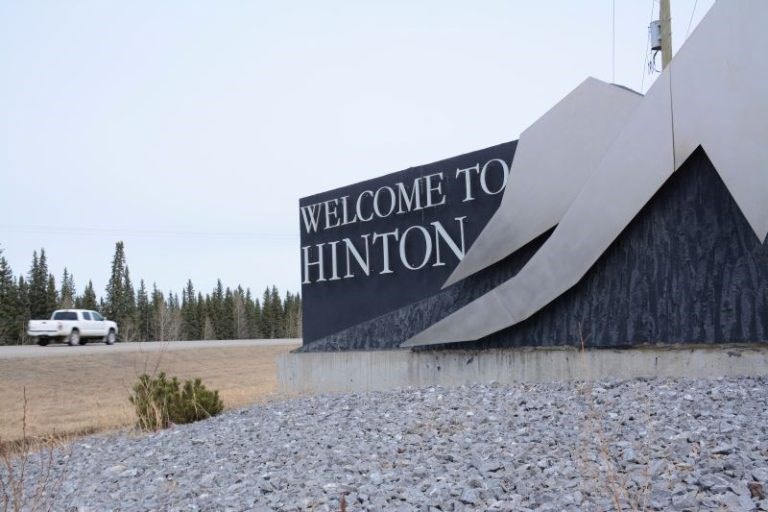HINTON – In light of spring budget adjustments, Hinton council is leaning toward maintaining last year’s tax rate while putting the surplus toward infrastructure reserves and future tax rate stabilization.
On April 22, committee of the whole voted 5-2 to reach consensus to bring the 2025 tax rate bylaw forward to the May 6 regular council meeting with a residential tax rate of 5.614 and a non-residential tax rate of 9.5461. Couns. Stuart Taylor and Ryan Maguhn voted against.
This option will generate a $800,000 surplus, with a third going to the recreation centre reserve, a third to a tax rate stabilization reserve and the final third to asset management. These allocations got unanimous support.
“I think this is a responsible way for council to commit to funding some of the things that they see are probably a shortfall in the community to help bring lasting benefit moving forward and to help fund things that we know are coming forward,” said Coun. Albert Ostashek.
The budget originally adopted by council last December requires the Town to raise $14.6 million through taxation and called for a 4.32 per cent tax increase, although Hinton council will decide on budget adjustments that would reduce this amount to $13.6 million.
These adjustments include a $600,000 increase through the revenue sharing agreement with Yellowhead County, a $300,000 increase to deployment revenue, a $200,000 increase to investment income and various expenditure adjustments, including a $300,000 reduction in operating costs for the Rowan recycle station as the Extended Producer Responsibility program comes into effect.
“This is a great situation to have,” Taylor said. “The question is, how are we going to use that [surplus]?”
Assessed values for Hinton properties increased from the prior year, with residential values increasing 3.76 per cent on average compared to a 3.34 per cent increase in the non-residential sector.
Using the 2025 assessment data, administration came up with three options for council’s consideration.
The first option called for a 5.4 per cent decrease to the 2024 tax rate that would generate $13.6 million.
The second option called for a zero per cent tax increase, which would generate an extra $800,000 that would go to fund the approved asset management plan of the Town’s infrastructure. While the rate would not increase, ratepayers would still pay more due to the increase in assessed value.
The third option called for a three per cent increase that would raise an extra $1.2 million for the asset management plan.
Taylor began the debate about the tax rate by moving that committee reach consensus to set mill rates to collect $14.27 million in net municipal taxes and that the extra $647,000 go into a mill rate stabilization fund.
“That’s the one thing every year that causes us potential trouble is when the tax rates fluctuate broadly from one year to the next,” he said.
This would result in a slight decrease to the tax rate. Taylor added that increased utility rates were already going toward infrastructure.
CAO Jordan Panasiuk later noted that although the increased utility rates would go toward funding water and sewer infrastructure, that still left other infrastructure underfunded.
Mayor Nicholas Nissen said mill rate stabilization was already an activity that the Town undertakes, but noted he was fine with formalizing the process. He wasn’t supportive of a tax rate that decreases mill rates.
“I’m more than happy to support a zero per cent increase to our mill rates,” Nissen said. “The reality is the mill rate is what we set. Going backwards on the mill rate just makes it harder for future councils.”
At Maguhn’s suggestion, Taylor’s motion was split so committee would decide separately on the requisition amount versus where the surplus would go afterward.
Committee voted 4-3 against setting the mill rates to collect $14.27 million in net municipal taxes. Couns. Taylor, Maguhn and JoAnn Race were in favour.
It then considered recommending a zero per cent tax rate. Maguhn opposed the motion, calling the $800,000 surplus “a little excessive.”
Coun. Trevor Haas mentioned the Town’s capital assets were underfunded by $6.1 million annually.
“That’s going to continue if we don’t do something about this,” Haas said. “We knew this day was coming that we need to consider that we’re underfunding the projects that we need to do.”
Coun. Kristen Chambers was supportive of the motion since it was important to consider the long-term needs of the community.
“We have an opportunity to have a zero per cent tax rate increase, which is good considering what we’re seeing in some of the other communities,” Chambers said.
The motion was briefly tabled before ultimately passing, so council could discuss how the surplus would be allocated.
Haas explained that even if residents voted in the upcoming plebiscite not to renovate or replace the Duncan Murray Recreation Centre, it would still cost money just to maintain the existing facility.
Nissen supported allocating the surplus to the recreation centre reserve, a tax rate stabilization reserve and asset management. Haas was also in support and made a motion to allocate a third of the funds to each item, which committee carried unanimously.
“Personally, I think it’s better to spread it out evenly or better to a different number of projects than to one because that, to me, is a better course of action,” Haas said.




